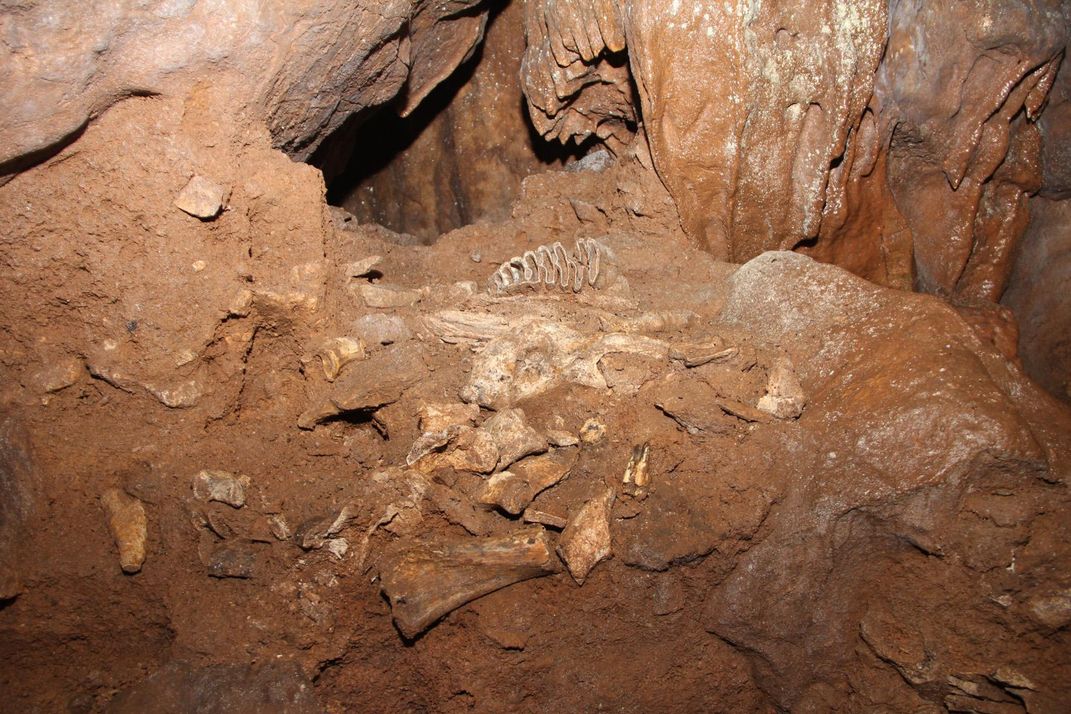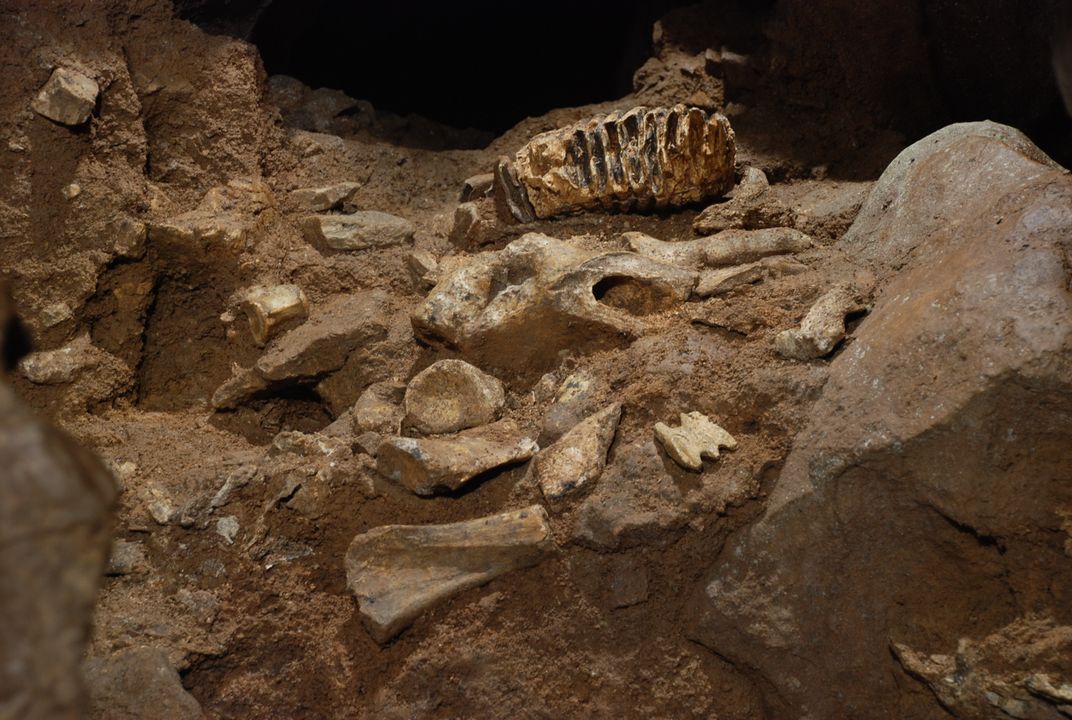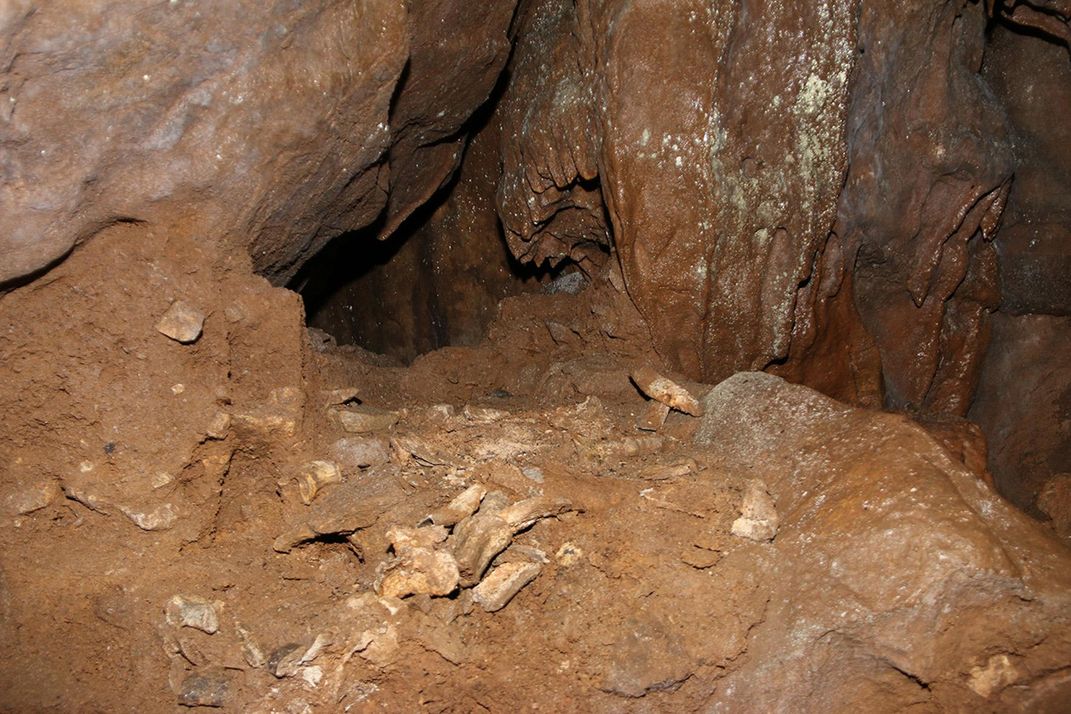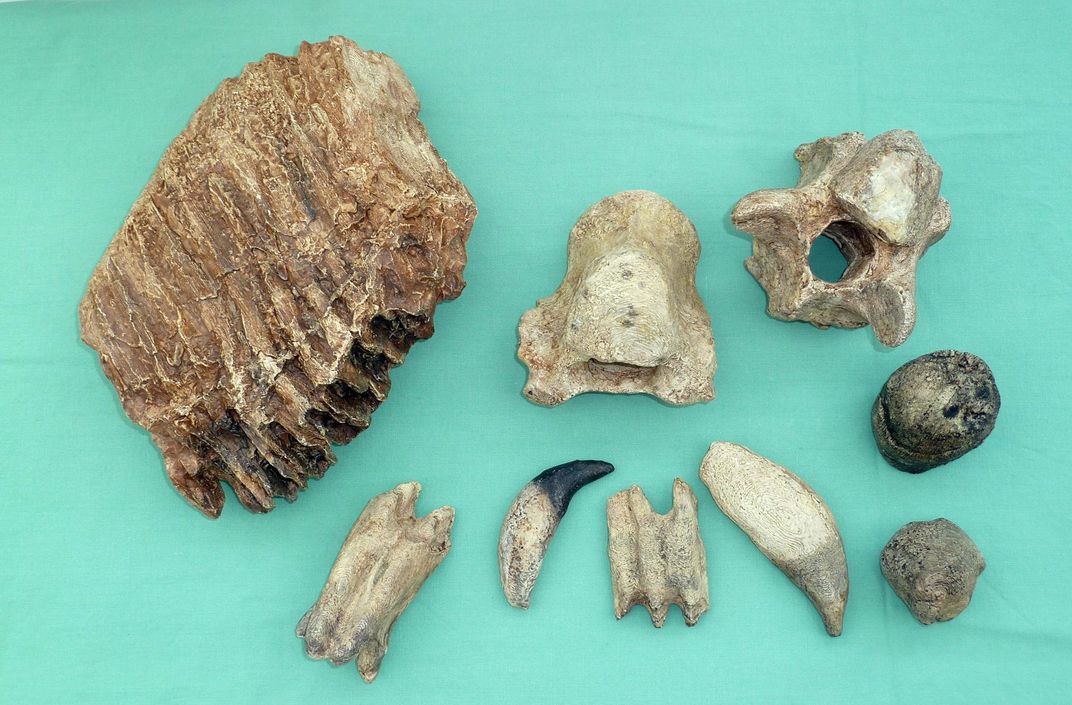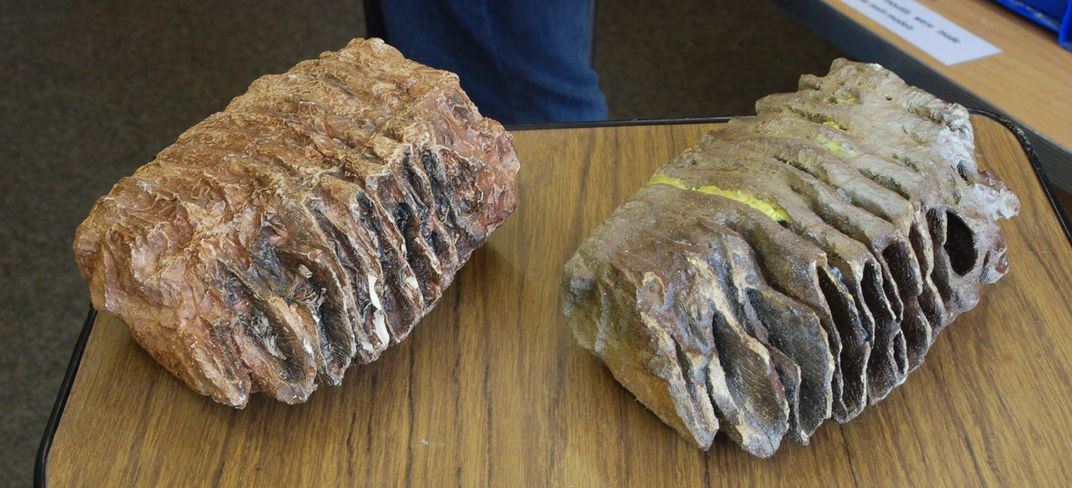Once Plundered by Thieves, Ancient Cave Reopens with 3-D Replicas of Stolen Fossils
It took multiple attempts—and two broken printers—to get the recreations right
A large steel door guards the entrance to Joint Mitnor, a rocky cave in Devon, England, littered with the fossilized bones of ancient mammals. But in September of 2015, thieves managed to smash through the door and make off with several bones—including the fossilized tooth of a 100,000 year old elephant—and trampled over many others. The cave was shuttered and the remains have yet to be found.
Last Saturday, Joint Mitnor formally reopened its doors after two years. Visitors to the site will find the cave just as it was before the devastating theft, thanks to a collaborative effort to create 3-D replicas of the missing relics, Maev Kennedy reports for the Guardian.
The initiative was fronted by experts at the University of Birmingham, the Natural History Museum, and the Pengelly Trust, which manages Joint Mitnor. The team created scans based on similar bones that were excavated from the cave, and fed those scans into a 3-D printer. It took multiple attempts—and two broken printers—to get the recreations right.
“Our printers were set up for small industrial tasks, not for leaving them working away hour after hour on objects as complex as the elephant tooth,” Robert Stone, professor of interactive multimedia systems at the University of Birmingham, tells Kennedy. “It broke two of them.”
The replicas have now been placed back in the cave, which was first excavated in 1939, according to the website of the Pengelly Trust. Some 4,000 bones—belonging to hippopotamus, bison, hyenas, straight-tusked elephants and other mammals—were found embedded in a talus of ancient debris.
The remains range in age from 80,000 to 120,000 years old, dating to a relatively warm period between two ice ages. It is believed that the unfortunate animals found in Joint Mitnor had fallen through a shaft on the roof of the cave.
Steve Peacock of the Totnes Times, a local UK paper, reports that in preparation for the cave’s new chapter, Trust officials reportedly bolstered security at the entrance to the site, just in case.
